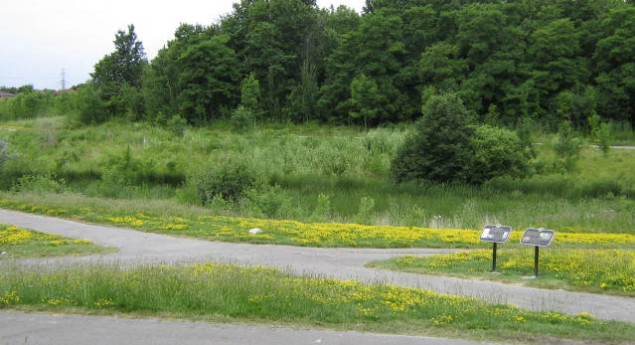About 600 years ago, this was the site of a vibrant village of 800 to 1000 people, ancestors of the Huron-Wendat nation. Though their name for this place is lost, their village was discovered under a farmer's field and named the Alexandra site in 2001. In a lengthy excavation, archaeologists revealed evidence of longhouses, sweat lodges, and garbage pits. Nearly 20,000 artifacts were documented and collected from the site before it was developed as a residential subdivision. No human burials were found.
Among this site's artifacts were beads made of sea shells from the eastern seaboard - proof that the people here were linked to extensive trading networks. This was also an agricultural community surrounded by cultivated fields of corns, beans, squash, sunflower, and tobacco. Remains of deer, lake trout and wild berries, among other animals and wild plants, indicate that hunting, fishing and gathering also supported the community. The village's location on a small ridge above a waterway (now the altered Highland Creek) provided it with fish and fresh water.
Constructed without palisades, the village excavated here was probably not threatened by extensive warfare. Its people lived together as extended families in sixteen longhouses, the earliest of which were built at the site's southern edge. Later houses were added to the north, while the older longhouses were frequently rebuilt throughout the site.
Earn 10 points!
Photo: 2009 Alan L Brown










